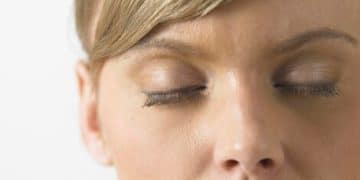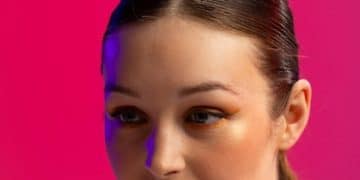Radiofrequency: Tighten Skin & Reduce Wrinkles by 30%
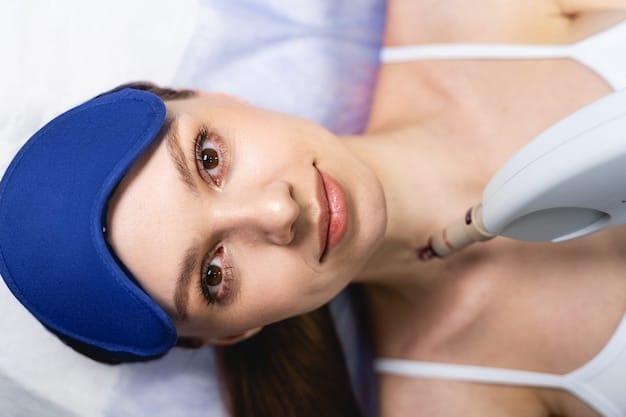
Radiofrequency (RF) technology offers a non-invasive solution to tighten skin and reduce wrinkles by approximately 30% by stimulating collagen and elastin production, leading to a more youthful appearance with minimal downtime.
Are you looking for a way to rejuvenate your skin without resorting to invasive surgery? The Power of Radiofrequency: How This Technology Can Tighten Skin and Reduce Wrinkles by 30% might be the answer you’ve been searching for.
Understanding Radiofrequency Technology
Radiofrequency (RF) technology has emerged as a popular method for non-surgical skin tightening and wrinkle reduction. It utilizes electromagnetic waves to heat the skin, stimulating collagen and elastin production. This process leads to firmer, smoother, and more youthful-looking skin with minimal downtime.
But how does this technology actually work? What are the key benefits of choosing RF treatment for facial aesthetics? Let’s delve into the specifics of radiofrequency technology and its impact on skin rejuvenation.
The Science Behind Radiofrequency
Radiofrequency works by delivering controlled thermal energy to the deeper layers of the skin. This heat causes the existing collagen fibers to contract, providing an immediate tightening effect. Simultaneously, it triggers the body’s natural healing response, stimulating fibroblasts to produce new collagen and elastin over time.
Types of Radiofrequency Treatments
There are several types of RF treatments available, each with its own unique characteristics and benefits. Monopolar, bipolar, and fractional RF are among the most common. Understanding the differences can help you make an informed decision about which treatment is right for you.
- Monopolar RF: Penetrates deeply into the skin, ideal for overall skin tightening and cellulite reduction.
- Bipolar RF: More superficial and focused, commonly used for facial rejuvenation and fine lines.
- Fractional RF: Creates micro-injuries in the skin to stimulate a more aggressive collagen remodeling process.
In summary, radiofrequency technology offers a versatile and effective approach to skin rejuvenation. By understanding how it works and the different types of treatments available, you can explore whether it’s the right option for your aesthetic goals.
Benefits of Radiofrequency for Skin Tightening
One of the primary benefits of radiofrequency treatments is their ability to tighten loose or sagging skin. This is particularly appealing to individuals who are experiencing the effects of aging or weight loss. The technology can improve skin elasticity and firmness, leading to a more youthful appearance.
Beyond skin tightening, what other advantages can RF offer? Let’s examine the wide array of benefits that make radiofrequency a standout choice in facial aesthetics.
Reducing Wrinkles and Fine Lines
RF treatments can significantly reduce the appearance of wrinkles and fine lines by stimulating collagen production. This helps to smooth out the skin’s surface and restore a more youthful complexion, effectively targeting common signs of aging.
Improving Skin Texture and Tone
In addition to tightening and wrinkle reduction, RF technology can enhance overall skin texture and tone. By promoting collagen remodeling, it addresses issues such as uneven skin tone, roughness, and enlarged pores, contributing to a smoother and clearer complexion.
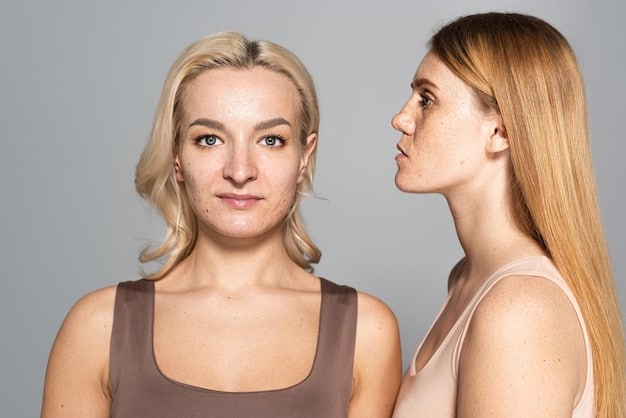
- Non-Invasive: RF treatments are non-surgical, meaning no incisions or anesthesia are required.
- Minimal Downtime: Most individuals can return to their normal activities immediately after the procedure.
- Long-Lasting Results: With proper maintenance, the results of RF treatments can last for several months to years.
In conclusion, radiofrequency offers a multitude of benefits for skin tightening and facial rejuvenation. Its non-invasive nature, minimal downtime, and long-lasting results make it an attractive option for those seeking to enhance their appearance.
How Radiofrequency Reduces Wrinkles by 30%
Clinical studies have shown that radiofrequency treatments can reduce wrinkles by approximately 30%. This is due to the technology’s ability to stimulate collagen production and remodel existing collagen fibers. The heat generated by RF causes the collagen to contract, providing an immediate tightening effect.
But how do these studies quantify this reduction, and what specific mechanisms are at play in achieving these results? Let’s take a closer look at what makes radiofrequency so effective at combating wrinkles.
The Role of Collagen and Elastin
Collagen and elastin are vital proteins that provide structure and elasticity to the skin. As we age, the production of these proteins decreases, leading to wrinkles and sagging skin. RF treatments counteract this process by stimulating fibroblasts to produce new collagen and elastin, replenishing what has been lost over time.
Clinical Evidence and Studies
Numerous clinical studies support the efficacy of radiofrequency in wrinkle reduction. These studies typically involve measuring wrinkle depth, skin elasticity, and collagen density before and after a series of RF treatments. The results consistently show a significant improvement in these parameters, leading to a visible reduction in wrinkles.
- Immediate Tightening: The heat from RF causes an immediate contraction of collagen fibers.
- Long-Term Remodeling: Over time, new collagen and elastin are produced, further improving skin texture and reducing wrinkles.
- Consistent Results: Clinical studies consistently demonstrate a 30% or greater reduction in wrinkles.
In short, the claim that radiofrequency can reduce wrinkles by 30% is substantiated by numerous clinical studies. By stimulating collagen and elastin production and remodeling existing collagen fibers, RF treatments offer a reliable solution for wrinkle reduction.
What to Expect During a Radiofrequency Treatment
Knowing what to expect during a radiofrequency treatment can help alleviate any anxiety and ensure a positive experience. Typically, the procedure involves cleansing the skin and applying a conductive gel. A handheld device is then used to deliver RF energy to the targeted areas. The sensation is often described as a warm massage.
What steps can you take to prepare for your treatment, and what can you anticipate in the days following? Here’s an overview of what to expect before, during, and after an RF session.
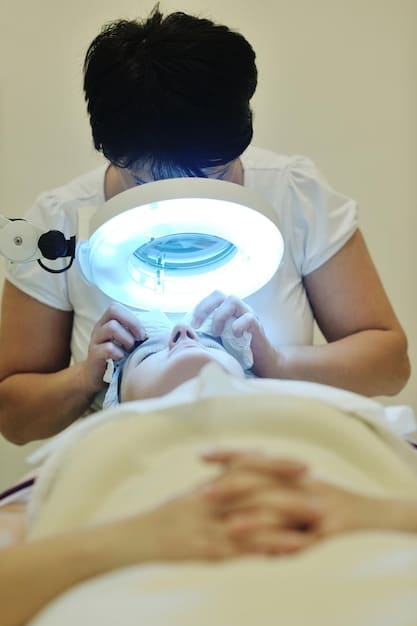
Pre-Treatment Preparation
Before your RF treatment, it’s important to avoid sun exposure and certain skincare products. Your provider may advise you to discontinue the use of retinoids, exfoliants, and other potentially irritating substances for a few days prior to the procedure.
The Treatment Process
During the treatment, your provider will move the RF device over your skin, delivering controlled pulses of energy. The duration of the session can vary depending on the size of the treatment area. Most sessions last between 30 minutes to an hour.
Post-Treatment Care and Results
After the treatment, you may experience mild redness or swelling, which typically subsides within a few hours. It’s crucial to follow your provider’s aftercare instructions, which may include avoiding sun exposure, staying hydrated, and using gentle skincare products. Results can be seen immediately, with continued improvement over several weeks as new collagen is produced.
In conclusion, understanding what to expect during a radiofrequency treatment can help you feel more confident and prepared. From pre-treatment preparation to post-treatment care, knowing the process can ensure a positive and effective experience.
Is Radiofrequency Right for You? Determining Candidacy
Determining whether radiofrequency is the right treatment for you involves considering your skin type, specific concerns, and overall health. Individuals with mild to moderate skin laxity and wrinkles are generally good candidates. It’s essential to consult with a qualified professional to assess your suitability and discuss realistic outcomes.
What factors should you consider when weighing your options, and who stands to benefit most from RF treatments? Let’s explore how to determine your candidacy for radiofrequency and what questions to ask during your consultation.
Suitable Skin Types and Concerns
RF treatments are generally safe for all skin types, but individuals with certain skin conditions may need to take extra precautions. Those with mild to moderate wrinkles, fine lines, and skin laxity are typically the best candidates. RF can also address concerns such as acne scars and enlarged pores.
Contraindications and Precautions
While RF is generally safe, there are certain contraindications to consider. Individuals who are pregnant, have pacemakers, or have metal implants in the treatment area should avoid RF treatments. Additionally, those with active skin infections or severe skin conditions may need to postpone the procedure until the condition is resolved.
- Consultation: Schedule a consultation with a qualified professional to discuss your goals and assess your suitability.
- Medical History: Be transparent about your medical history and any medications you are taking.
- Realistic Expectations: Understand that RF treatments provide gradual improvement and may require multiple sessions.
In summary, determining if radiofrequency is right for you involves careful consideration of your skin type, concerns, and medical history. Consulting with a qualified professional and having realistic expectations are key to a successful outcome.
Combining Radiofrequency with Other Treatments
Radiofrequency can be effectively combined with other aesthetic treatments to enhance overall results. For example, combining RF with microneedling can stimulate collagen production even further, leading to more significant improvements in skin texture and firmness. Similarly, RF can complement other non-invasive procedures like chemical peels and laser treatments.
What synergies exist between RF and other methods, and how can these combinations optimize your skin rejuvenation journey? Let’s delve into the possibilities of integrating radiofrequency with other aesthetic treatments.
RF and Microneedling
Combining RF with microneedling involves using microneedles to create tiny punctures in the skin while simultaneously delivering RF energy. This dual approach stimulates collagen production more aggressively, resulting in improved skin texture, reduced wrinkles, and minimized acne scars.
RF and Chemical Peels
Chemical peels exfoliate the outer layers of the skin, promotingCell Turnover and improving skin tone. When combined with RF, the peel can prepare the skin for better RF penetration, enhancing collagen stimulation and overall rejuvenation.
RF and Laser Treatments
Laser treatments target specific skin concerns such as pigmentation and blood vessels. Combining laser treatments with RF can provide comprehensive rejuvenation by addressing both surface-level and deeper skin issues, leading to a more balanced and harmonious result.
In conclusion, combining radiofrequency with other aesthetic treatments can provide synergistic benefits, leading to more significant and comprehensive skin rejuvenation. By integrating RF with complementary procedures, you can achieve optimal results and address a broader range of skin concerns.
| Key Point | Brief Description |
|---|---|
| ✨ Collagen Boost | Radiofrequency stimulates collagen production, reducing wrinkles. |
| ⏱️ Minimal Downtime | Return to daily activities immediately after treatment. |
| 🎯 Targeted Results | Effective for tightening skin and reducing fine lines. |
| 🤝 Combined Therapies | Pair RF with other treatments for optimal results. |
Frequently Asked Questions
▼
A typical radiofrequency treatment session lasts between 30 to 60 minutes, depending on the size and number of the targeted areas.
▼
Side effects are typically mild and temporary, including redness, swelling, and warmth in the treated area, which usually subside within a few hours.
▼
Most people require a series of 3 to 6 sessions, spaced several weeks apart, to achieve optimal and long-lasting results in skin tightening and wrinkle reduction.
▼
Radiofrequency treatments are generally well-tolerated. Patients typically describe the sensation as a warm massage, with minimal discomfort during the procedure.
▼
The results of radiofrequency treatment can last from several months to a year or more, depending on individual factors like skin type, lifestyle, and maintenance treatments.
Conclusion
In conclusion, the power of radiofrequency lies in its ability to tighten skin and reduce wrinkles non-invasively. By stimulating collagen production, it offers a safe and effective solution for facial rejuvenation, with minimal downtime and long-lasting results.
